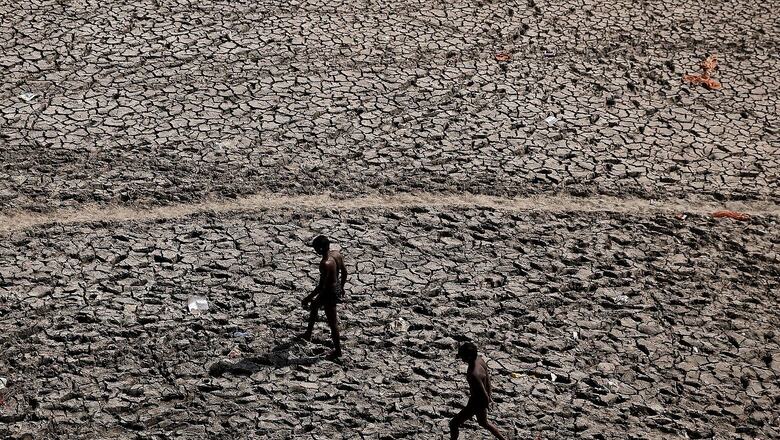
views
The average temperature across India is projected to rise by 2.4 – 4.4 degree Celsius by 2100, while summer heat waves are projected to triple or quadruple by then due to climate change, according to a report. As the temperature increases, average land productivity is also decreasing, US-based IFPRI said in its latest report on Thursday. For the South Asia region as a whole, annual mean temperatures are projected to increase by 1.2 – 4.3 degree celsius (under low- and high-emissions scenarios) by the end of the century, it noted.
According to the report ’The 2022 Global Food Policy Report’ published by International Food Policy Research Institute (IFPRI), ”South Asia is a climate change hotspot, with many climate-induced risks compounded by significant existing vulnerabilities”. Policy actions vary across countries, but all governments in the region have signed the Paris Agreement on climate change, it said. However, all South Asian countries are lagging in undertaking some critical actions that would directly contribute to both climate change adaptation and mitigation in the region, and COVID-19 has led to a significant reduction in climate-related investments, it added.
The report said that the temperature rise in South Asia over the past century is well documented, and the projections are dire. ”In South Asia, the average temperature rise has been a little less than the global average temperature because of the cooling effect of aerosols, including short-lived climate pollutants. But it has its own negative health and agricultural consequences,” said Aditi Mukherji, Principal Researcher, International Water Management Institute (IWMI).
According to the report, increased frequency and/or intensity of extreme events, such as high heat, extended droughts, and floods are becoming more frequent. They are likely to play increasingly important roles in productivity and production. Both low and high extremes have increased in South Asia, especially since the 1980s, with more frequent dry spells and more intense wet spells, it said.
”Notably in India, summer monsoon precipitation has shown declining trends over the last few decades, with larger decreases over the main breadbasket region of the Indo-Gangetic belt,” it added. In India, the report said, reduced summer monsoon rainfall has increased the frequency and spatial extent of droughts from the 1950s onward. Similarly, in Pakistan, the intensity and severity of droughts have increased over the last century.
”Greater incidence of localised extreme precipitation events has increased flood risks in India, and projections show increases in flood intensity and occurrence in the Indus, Ganges, and Brahmaputra River basins,” it noted.
On the other hand, the tropical cyclones over the Northern Indian Ocean region have become less common, although very severe cyclonic storms have become more frequent in the post-monsoon season, it added. Due to increasing salinity intrusions in inland aquaculture ponds, there is a fall in fishery productivity both in India and Bangladesh, the report said. ”The global food sector will likely have to become not just zero emissions but a net sink in order to offset positive emissions elsewhere. These are the big challenges that we need to address over the next 30 years,” Channing Arndt, Director of IFPRI’s Environment and Production Technology Division, said. There are several promising innovations that can be applied to adaptation but with more warming, adaptation will become less effective, he added.
”Climate risks in South Asia are amplified by existing vulnerabilities, which have been further compounded by the impacts of Covid-19. It has led to a decrease in yields, depleted natural resources, and associated income losses,” said Shahidur Rashid, Director-South Asia, IFPRI. The impact of climate change will make it extremely challenging for the region to achieve the SDG goals of zero hunger by 2030, he noted.
According to the report, as much as USD 350 billion per year will be needed to meet climate-related goals in food systems much of which could be ”reoriented” from existing sources. Current financial flows — including agricultural support, international development funds, and private investment — are at best insufficient and at worst counterproductive to climate-resilient development, it said. They often support unsustainable and unhealthy production while undervaluing environmental impacts, it said, adding the future of food systems depends on access to sufficient funding to facilitate a shift to sustainable production and consumption and to better livelihoods, it added.
Read all the Latest News, Breaking News, watch Top Videos and Live TV here.




















Comments
0 comment